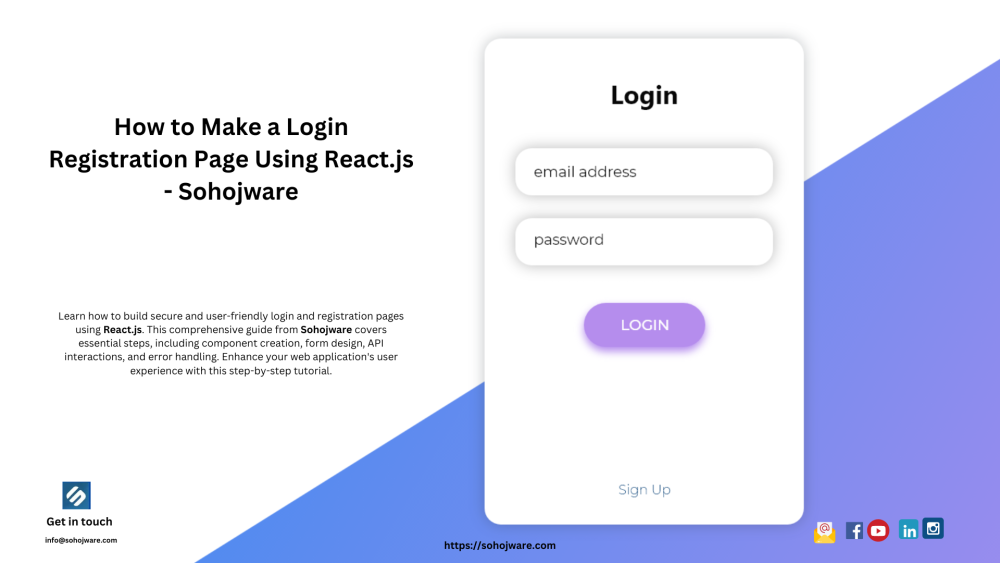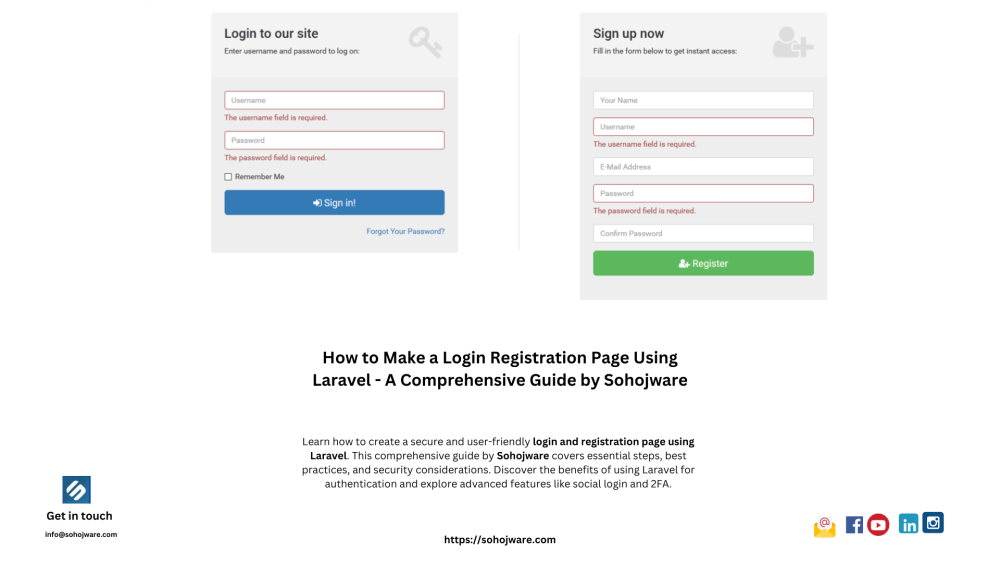In today's digital landscape, user authentication is a fundamental aspect of countless web applications. React.js, a popular JavaScript library for building user interfaces, offers a powerful and versatile framework for creating dynamic login and registration pages. This guide from Sohojware, a software development company, will equip you with the knowledge to craft secure and user-friendly login and registration experiences using React.js.
Why Choose React.js for Login and Registration Pages?
React.js shines in building interactive and responsive user interfaces, making it a perfect choice for crafting login and registration forms. Here's what sets React.js apart:
-
Component-Based Architecture: Breaking down login and registration logic into reusable components with React.js fosters code organization and maintainability.
-
Virtual DOM: React.js employs a virtual DOM, optimizing performance by identifying only necessary UI changes, making your login and registration pages feel snappy.
-
JSX Syntax: JSX, an extension of JavaScript, allows you to write HTML-like structures within your code, streamlining the development process for login and registration forms in React.js.
Building the Login and Registration Page with React.js
Let's delve into the steps involved in constructing a login and registration page using React.js:
-
Setting Up the Project:
Start by creating a new React project using Create React App:
.png)
2. Installing Dependencies:
For making API requests (explained later), install Axios:
.png)
3. Creating Components:
We'll establish separate components for Login and Registration:
-
Create two new files named Login.jsx and Registration.jsx inside the src directory.
-
Building the Login Component:
In Login.jsx, define the Login component with essential elements:
.png)
Here, we use the useState hook from React.js to manage the state of username and password input fields.
-
Designing the Login Form:
Within the Login component, utilize JSX to structure the login form with input fields, a submit button, and potential error messages:
.png)
This code snippet demonstrates the login form structure with input fields and a submit button. You'll need to implement additional functionalities like error handling and API calls for user authentication (explained later).
-
Building the Registration Component:
Similarly, create the Registration component in Registration.jsx, incorporating necessary input fields for user registration:
.png)
Here, additional state variables like email are introduced for user registration.
-
Designing the Registration Form:
Within the Registration component, utilize JSX to create the registration form:
1.png)
-
Handling Form Submission:
In both the Login and Registration components, implement the onSubmit event handler to manage form submission logic and API interactions:
.png)
-
Making API Calls:
Utilize the axios library to make API calls to your backend server for login and registration:
.png)
-
Rendering Components:
In your main App.js component, render the appropriate component based on the user's authentication state:
.png)
Additional Considerations:
-
Error Handling: Implement robust error handling to provide informative feedback to users in case of invalid inputs or server-side issues.
-
Security: Prioritize security by using secure password hashing techniques and protecting against common vulnerabilities like cross-site scripting (XSS) and SQL injection.
-
State Management: For complex applications, consider using state management libraries like Redux or Context API to manage global state efficiently.
-
Styling: Enhance the visual appeal of your login and registration pages using CSS or a styling library like styled-components.
Conclusion:
By following these guidelines and leveraging the power of React.js, you can create secure and user-friendly login and registration pages that enhance the user experience of your web applications. Sohojware, with its expertise in software development, can provide further assistance and guidance in building robust and scalable authentication systems.




